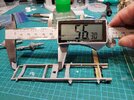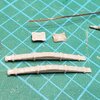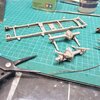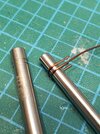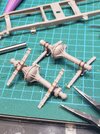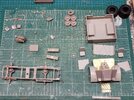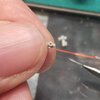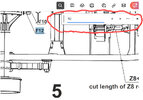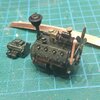I've broken all my .03 mm drill bits,
Yes, they are ridiculously fragile.
My MO now is to hold the part in one hand, and the bit in the other.
I've tried all the other permutations, including holding the part with tweezers, pliers, and using a pin vise for the bit, drilling down with just the weight of the bit...
What I've found is that I have to be touching the part, and the bit, to detect the least bit of resistance, torsion, or oblique leverage that might snap the bit; if I do, I immediately back off, breathe, readjust the angle (which is easier if both hands are involved).
I also use my finest scribing point to start it, so there is no skating. The drilling is a subtle twist, backing out frequently to remove any waste that could jam. I would like to think that breakage has been less frequent, and hopefully I haven't just jinxed it!
...Not that I'm
superstitious, but memories of my dad shouting at the TV announcer in the last minutes of a final inning who would dare to utter the words:
"... and it looks like he's gonna pitch a no-hitter!" 
